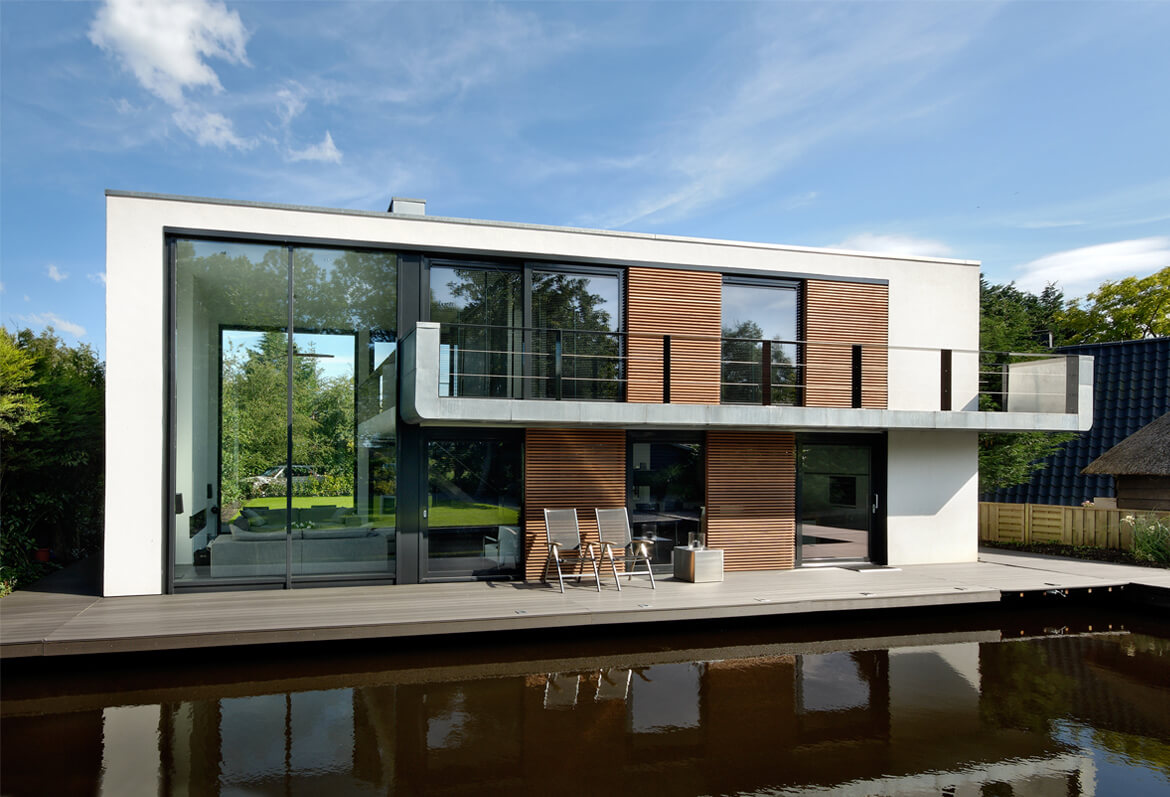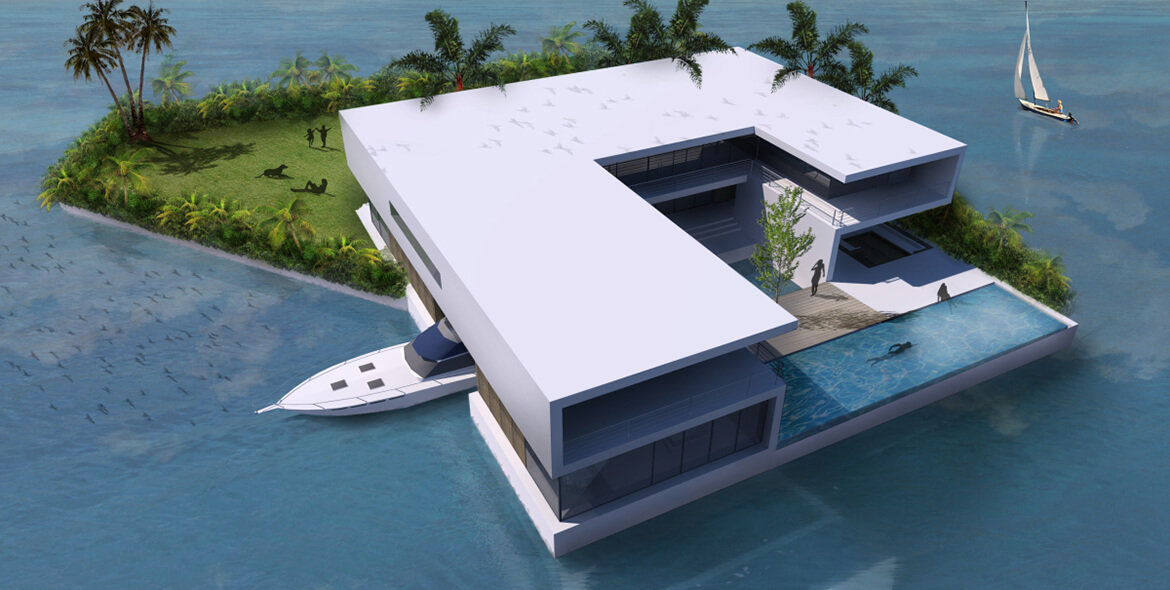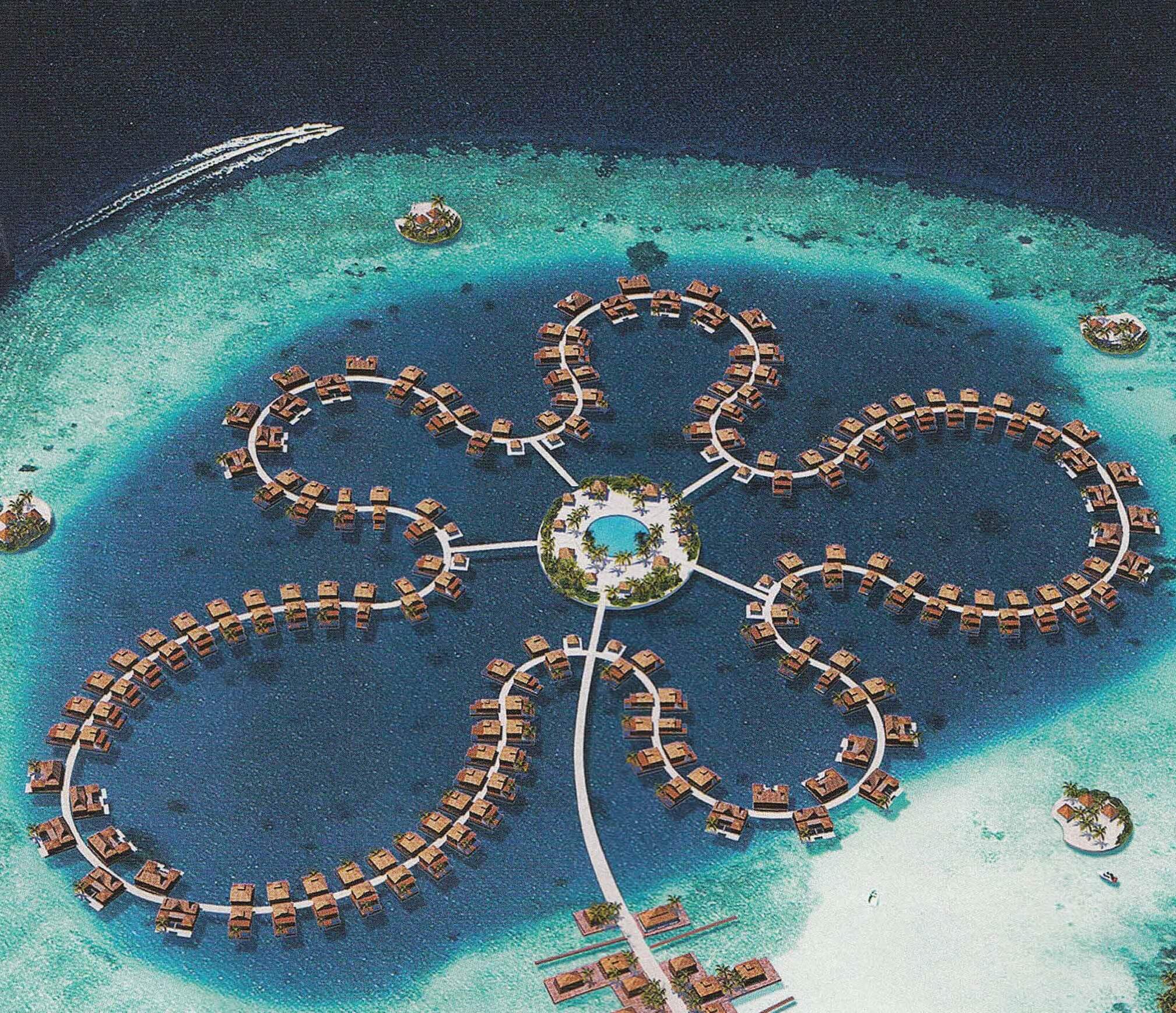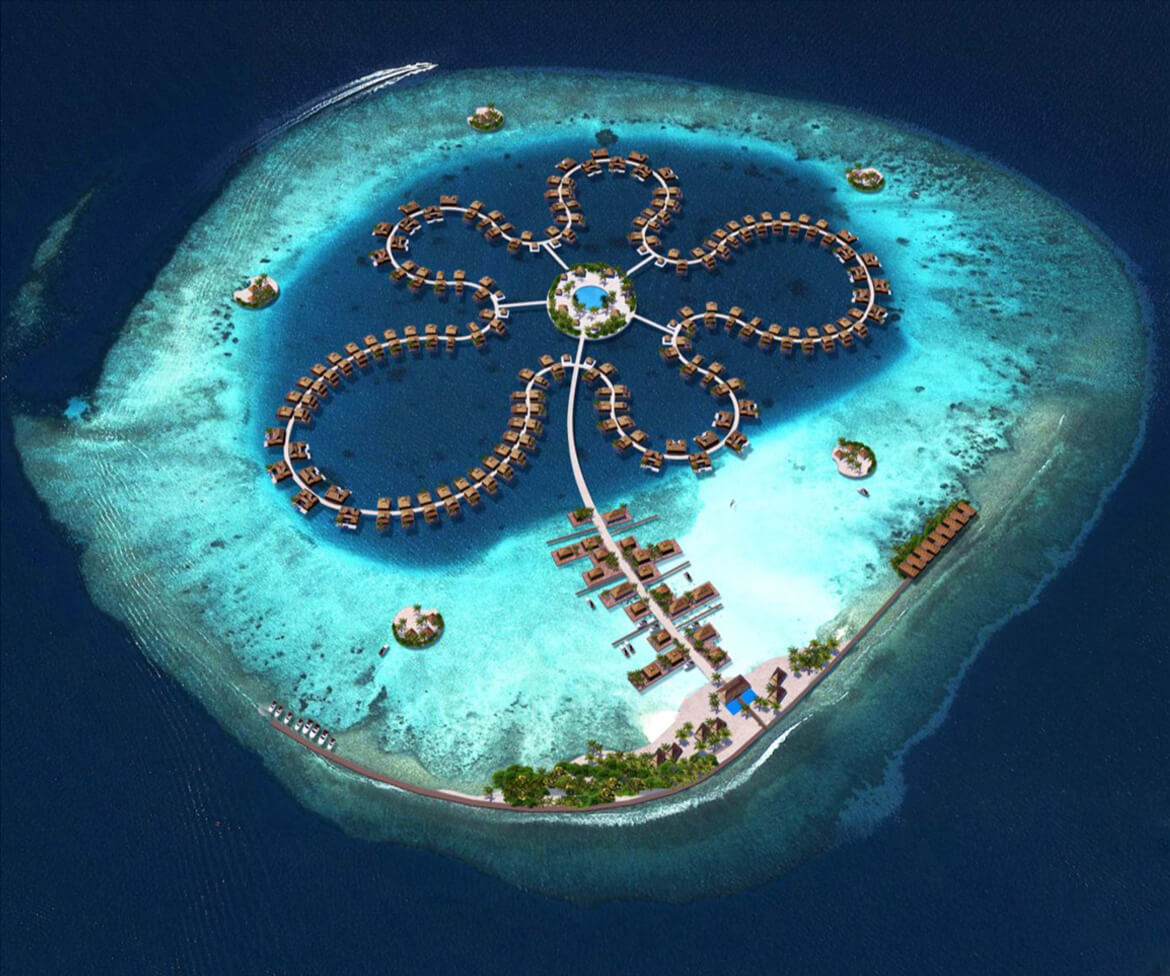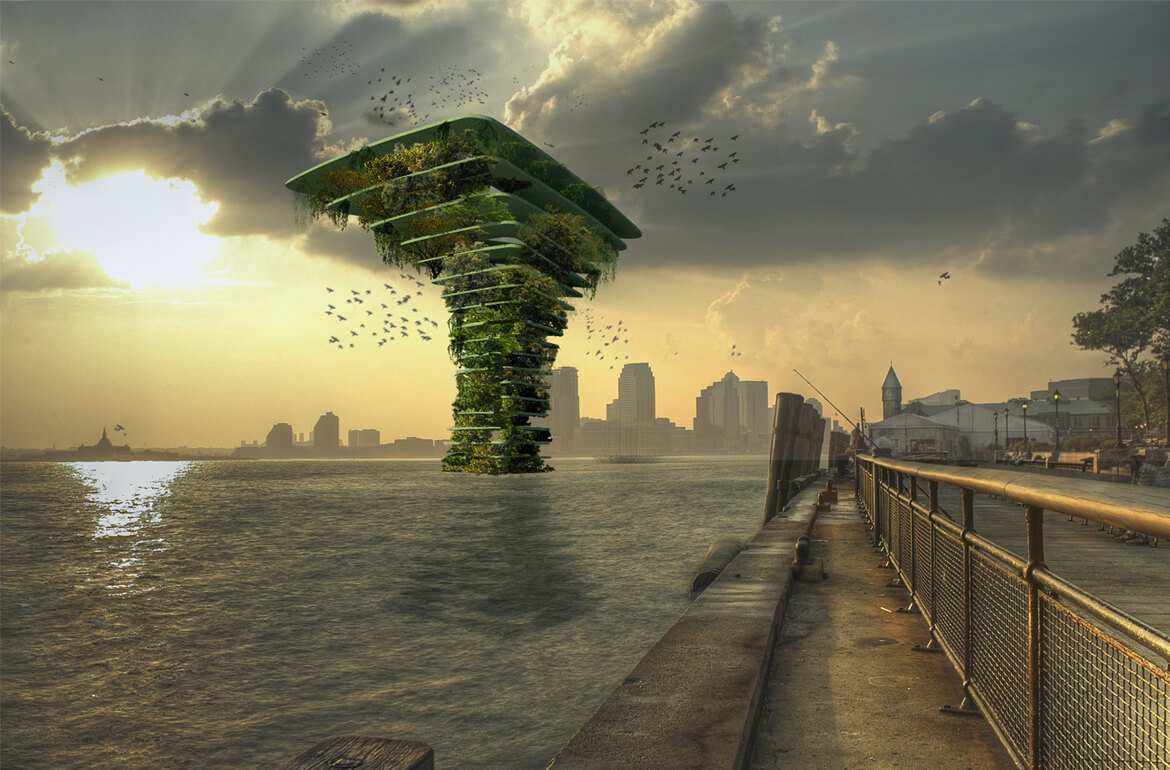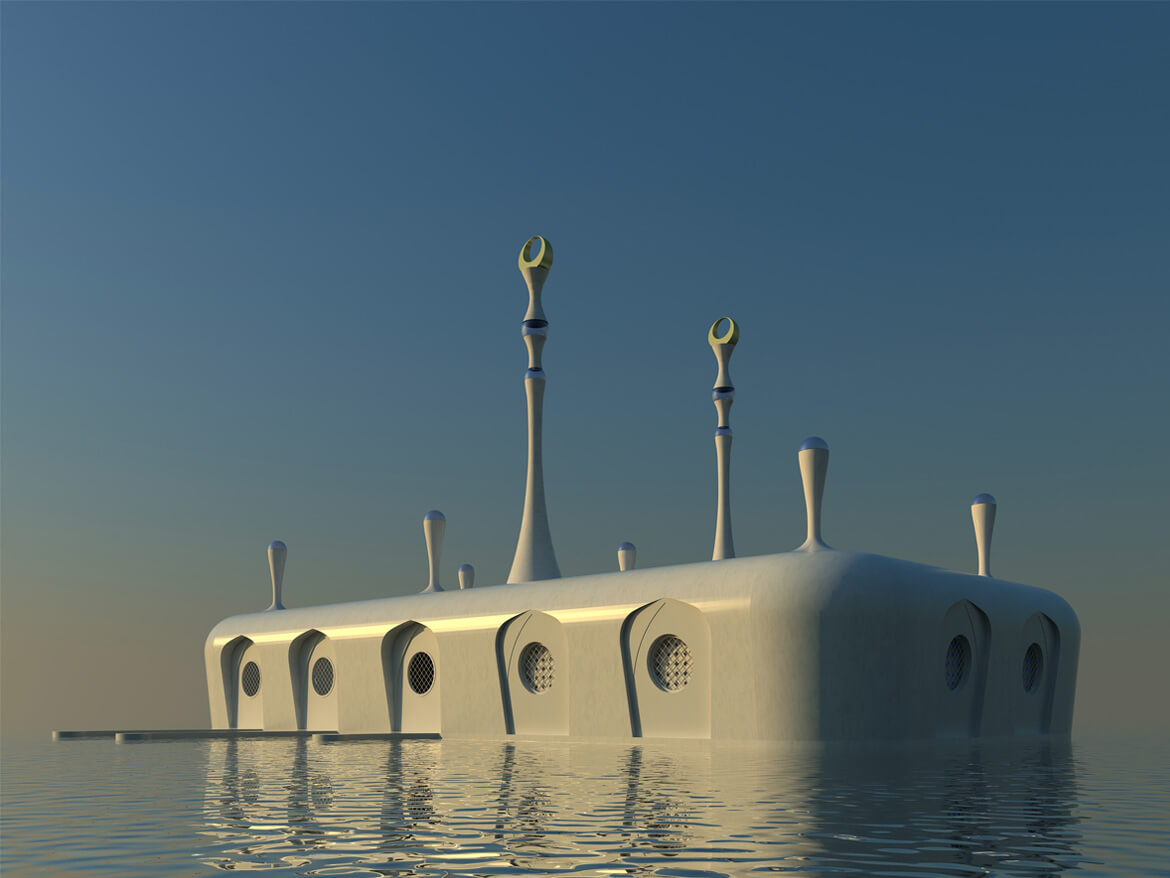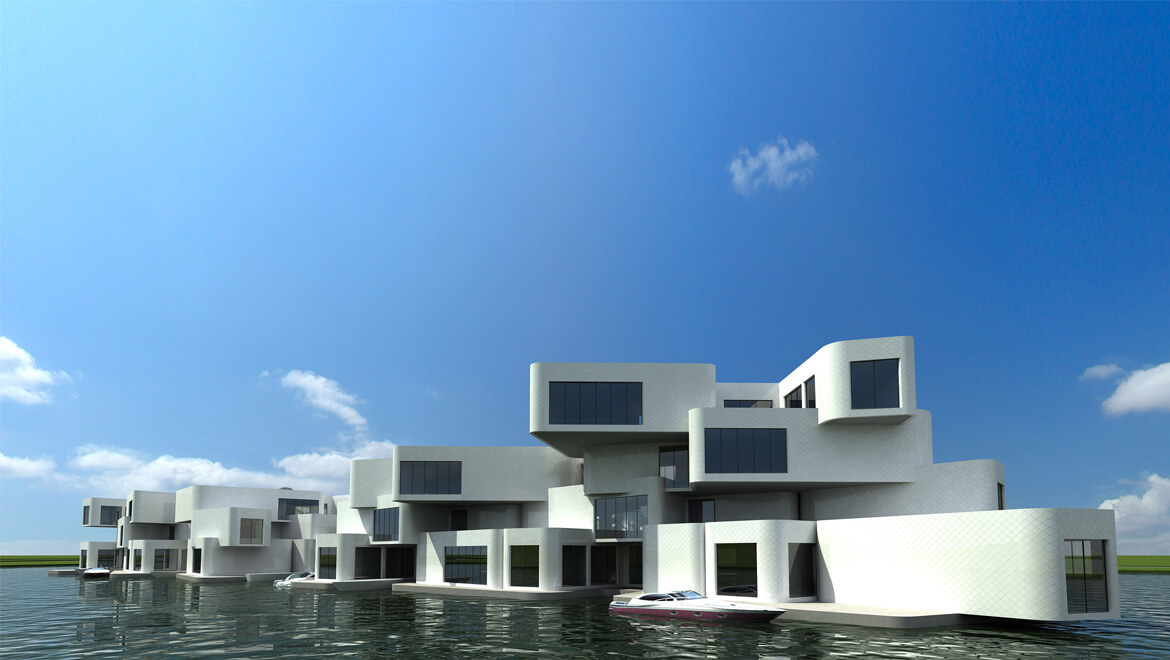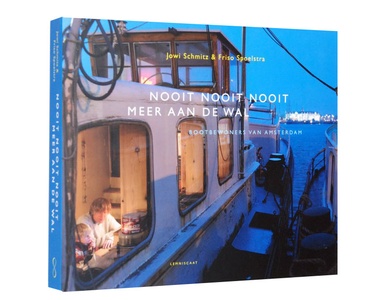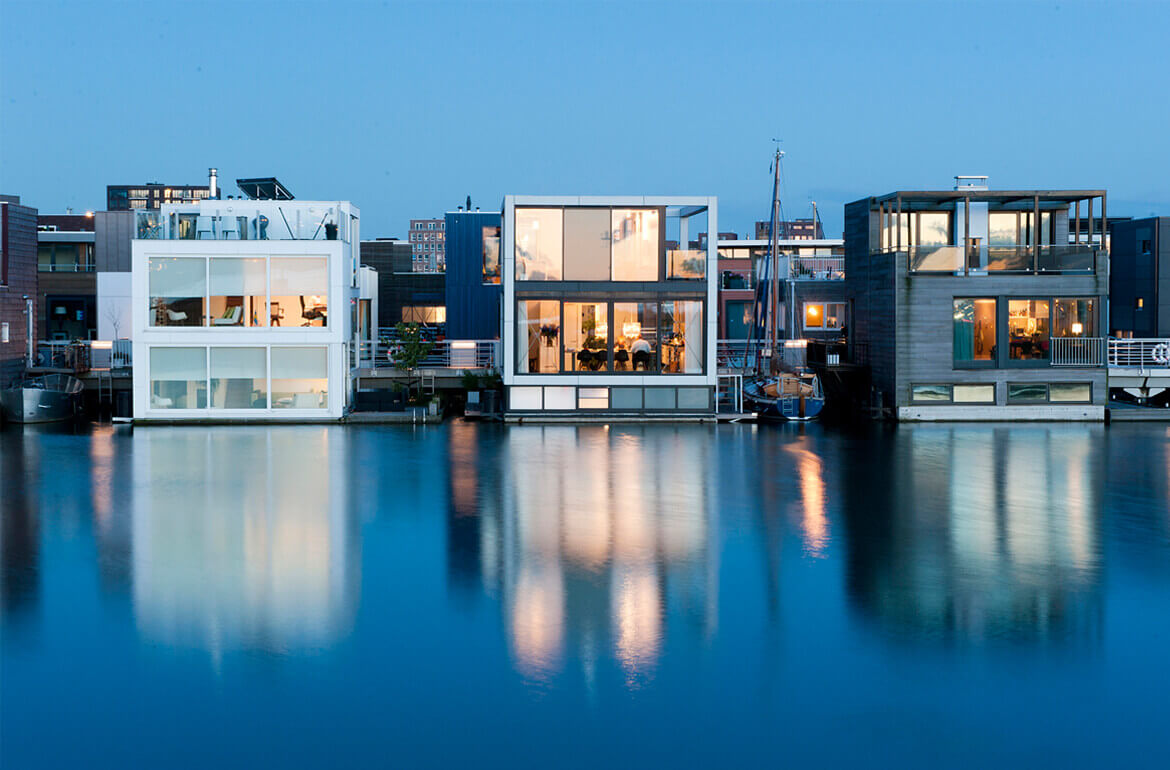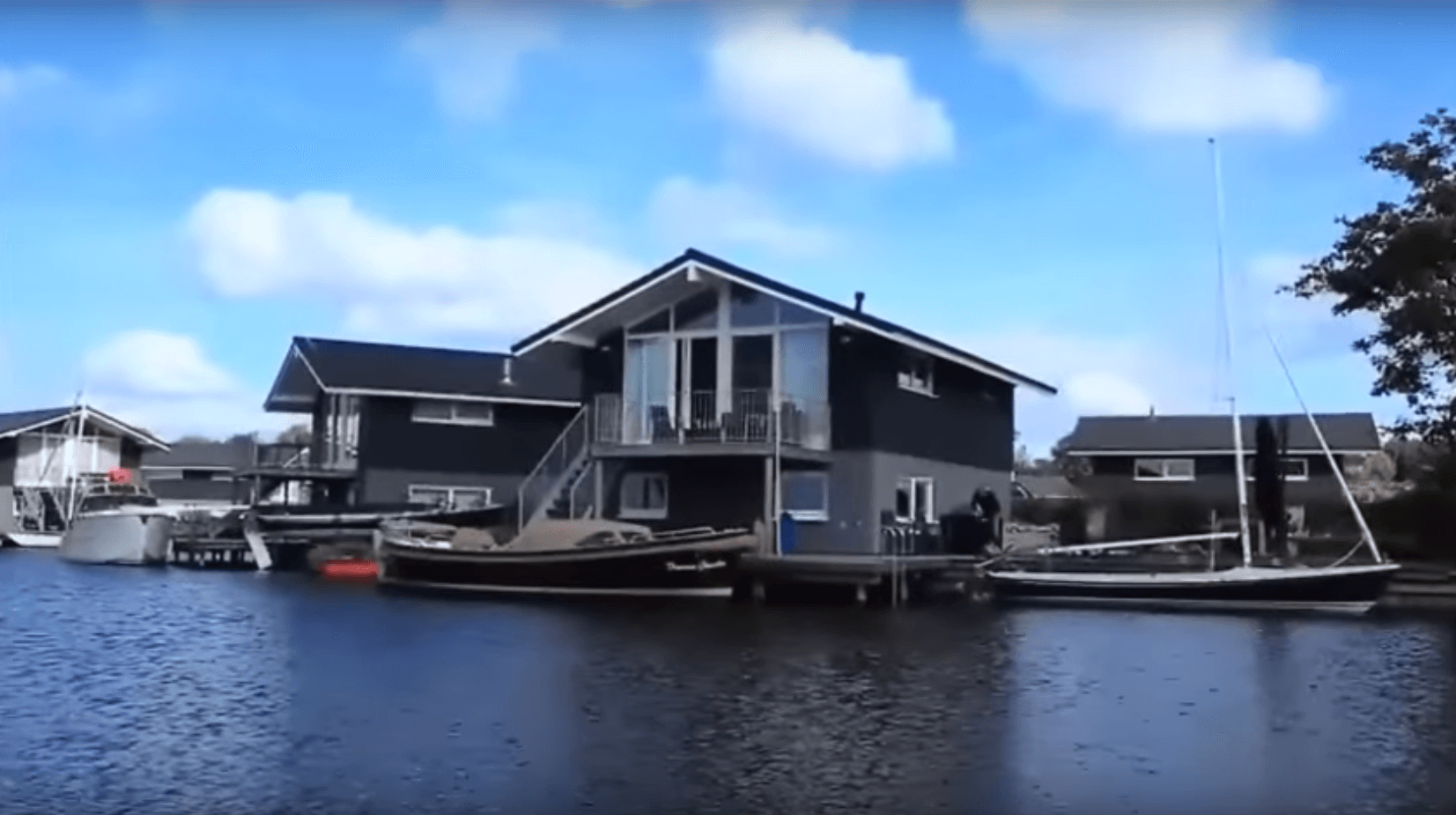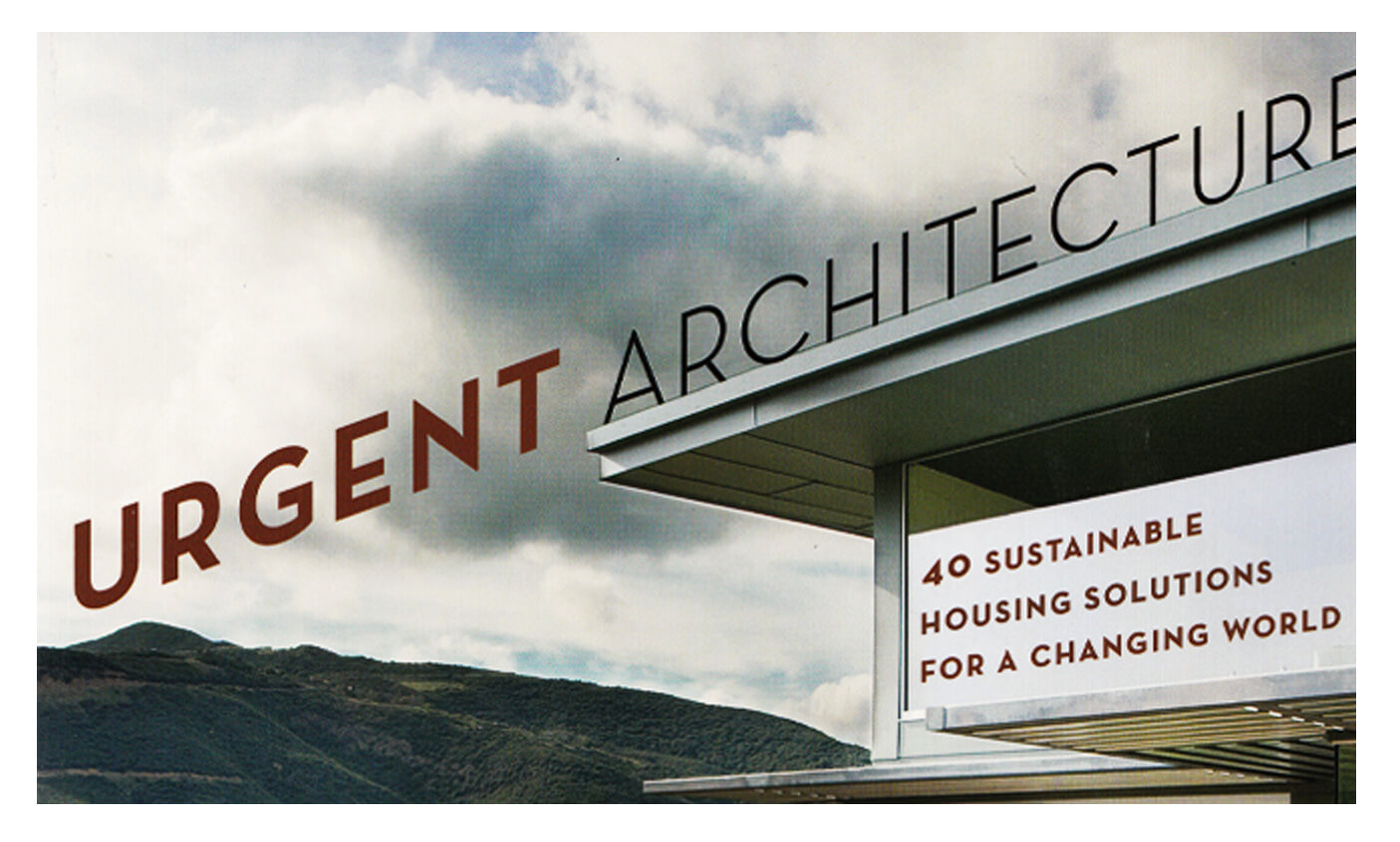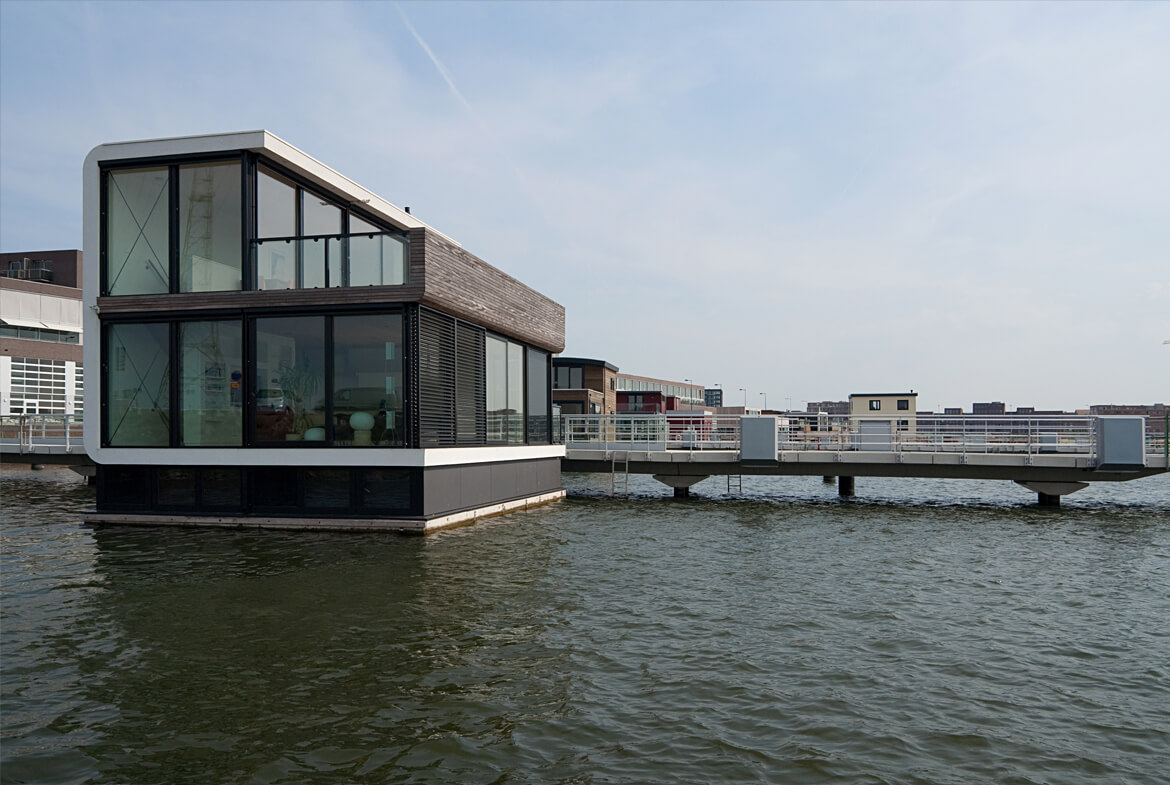Schwimmende Holländer
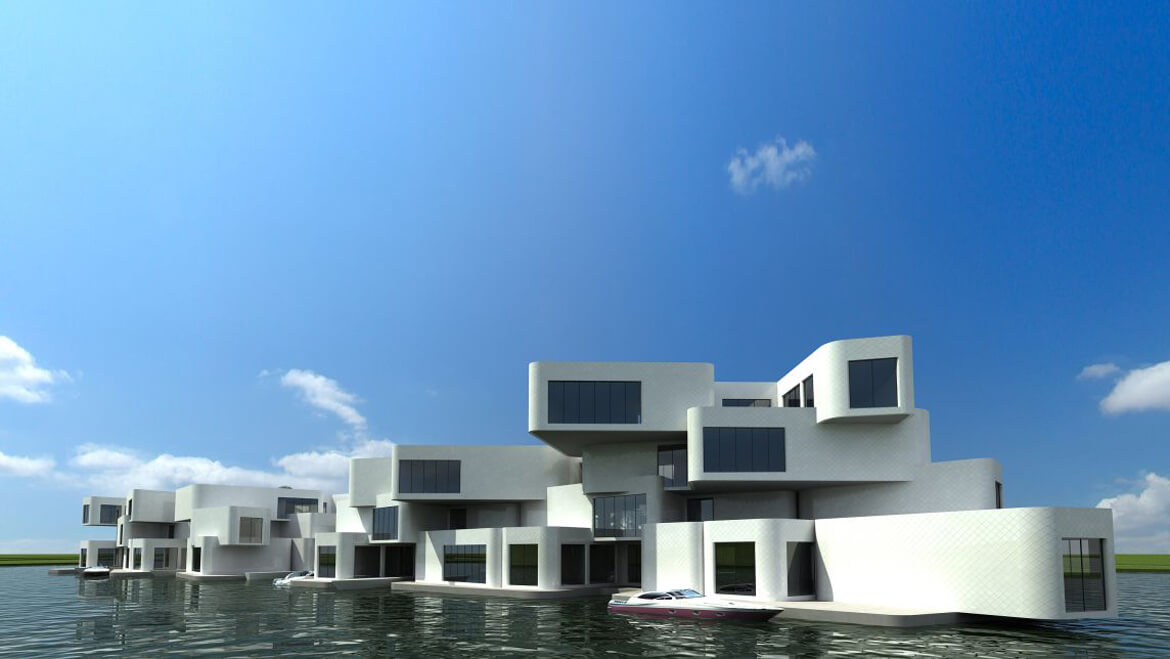
Drinnen & Draußen,Nadine Oberbuber, October 2013
Weil die Niederlande viele Einwohner, aber wenig Platz haben, bauen sie einfach ins Wasser. Und fluten dafür sogar ihre Polder. So lernen Hausbesitzer das Schwimmen.
Natürlich kann man es verrückt nennen, was die Holländer tun. Eigentlich dürfte es einen großen Teil ihres Landes nämlich gar nicht geben. Dass Gegenden wie Westland trotzdem existieren und viele Menschen dort wohnen, das verdanken sie Pumpanlagen, die das Land trockenlegen. Zuerst bauten die Holländer Windmühlen, später gigantische Pumpwerke. Die befördern das Wasser, das von unten in die Polder drückt, über den Deich nach draußen in die See. Das ist verrückt. Aber nun sollen viele Pumpen abgestellt werden und die Polder voll mit Wasser laufen. Warum? Damit dort noch mehr Menschen wohnen können. Denn Holland hat ziemlich viele Einwohner, aber nur sehr wenig Platz und baut künftig seine Häuser aufs Wasser.
Einer, der vormacht, wie das geht, ist Architekt Koen Olthuis. Er hat sich international als Wasserarchitekt einen Namen gemacht und seine Idee von der schwimmenden Stadt auf den gefluteten Poldern schon vielen Ungläubigen erklärt. „Ihr verrückten Holländer, hört man die Menschen geradezu denken“, sagt er manchmal amüsiert, „es kostet stets eine Menge Mühe, ihnen zu erklären, dass es sehr logisch ist, was wir hier tun.“ Denn es ist nun einmal so, dass mehr als 16 Millionen Einwohner in diesem Land leben, das nicht einmal so groß ist wie Niedersachsen, aber dreimal so dicht besiedelt.
Ein Fünftel der Landesfläche vom Wasser bedeckt
Kaum irgendwo auf der Welt quetschen sich so viele Menschen auf engsten Raum wie in den Niederlanden, 400 Einwohner je Quadratkilometer. Wir Deutschen kommen nur auf 231. Doch während es bei uns dünnbesiedelte Landstriche gibt mit Wiesen und Wäldern, gibt es in denjenigen Teilen Hollands, in denen wenige Menschen wohnen, vor allem eins: Wasser.
Rund ein Fünftel der Landesfläche ist vom Wasser bedeckt, etwa vom Binnensee IJusselmeer. Flevoland, die Provinz südlich davon, existiert nur, weil die Holländer diese Polderregion dem Meer abgetrotzt haben. Gut ein Viertel der Niederlande liegt unterhalb des Meeresspiegels – dummerweise genau die Fläche, in der über 60 Prozent der Bevölkerung wohnen, im Städteknubbel zwischen Amsterdam, Rotterdam und Den Haag, die langsam aus allen Straßen und Grachten platzen. Die Region würde sofort voll Wasser laufen, wenn die Pumpen stillstehen, das nächste große Hochwasser kommt oder der Meeresspiegel wegen der Klimaerwärmung steigt. Dann bliebe bloß ein schmaler Rand entlang der deutschen Grenze übrig, der noch aus dem Wasser schaute. So weit das Katastrophenszenario.
Damit es nicht dazu kommt, haben die Holländer insgesamt 3000 Kilometer schützenden Deich aufgetürmt, die das Land dauerhaft trocken halten sollen. Selbst wenn sich der Meeresspiegel um bis zu 1,3 Meter heben würde, wie Klimaforscher bis 2100 prophezeien, schwappte das Wasser kaum über alle Deiche. Aber sie zu erhöhen wäre immens teuer. Deswegen findet Olthuis: Die Holländer hätten schon immer eine Hassliebe zum Wasser gehabt, es sei nun an der Zeit, sich mit ihm zu versöhnen. Er will, dass seine Landleute das Wasser weniger fürchten, sondern es besiedeln. Sie könnten Wasserstraßen bevölkern, weite Hafenflächen in den überfüllten Großstädten oder das IJsselmeer. Demnächst wohnen sie in Amphibienhäusern und schwimmenden Siedlungen, und wenn das Wasser steigt, hebt es die Häuser einfach um ein paar Meter an.
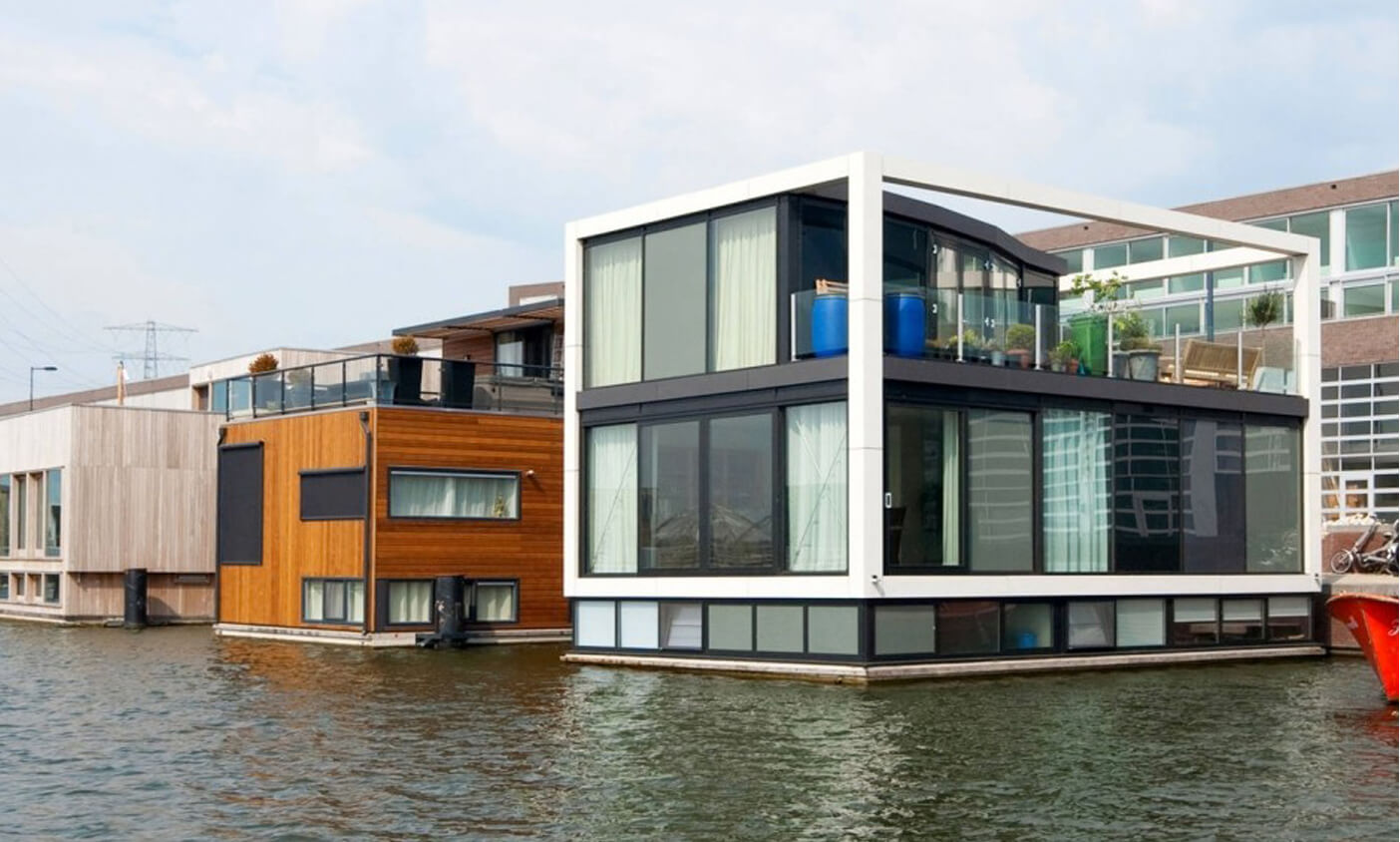



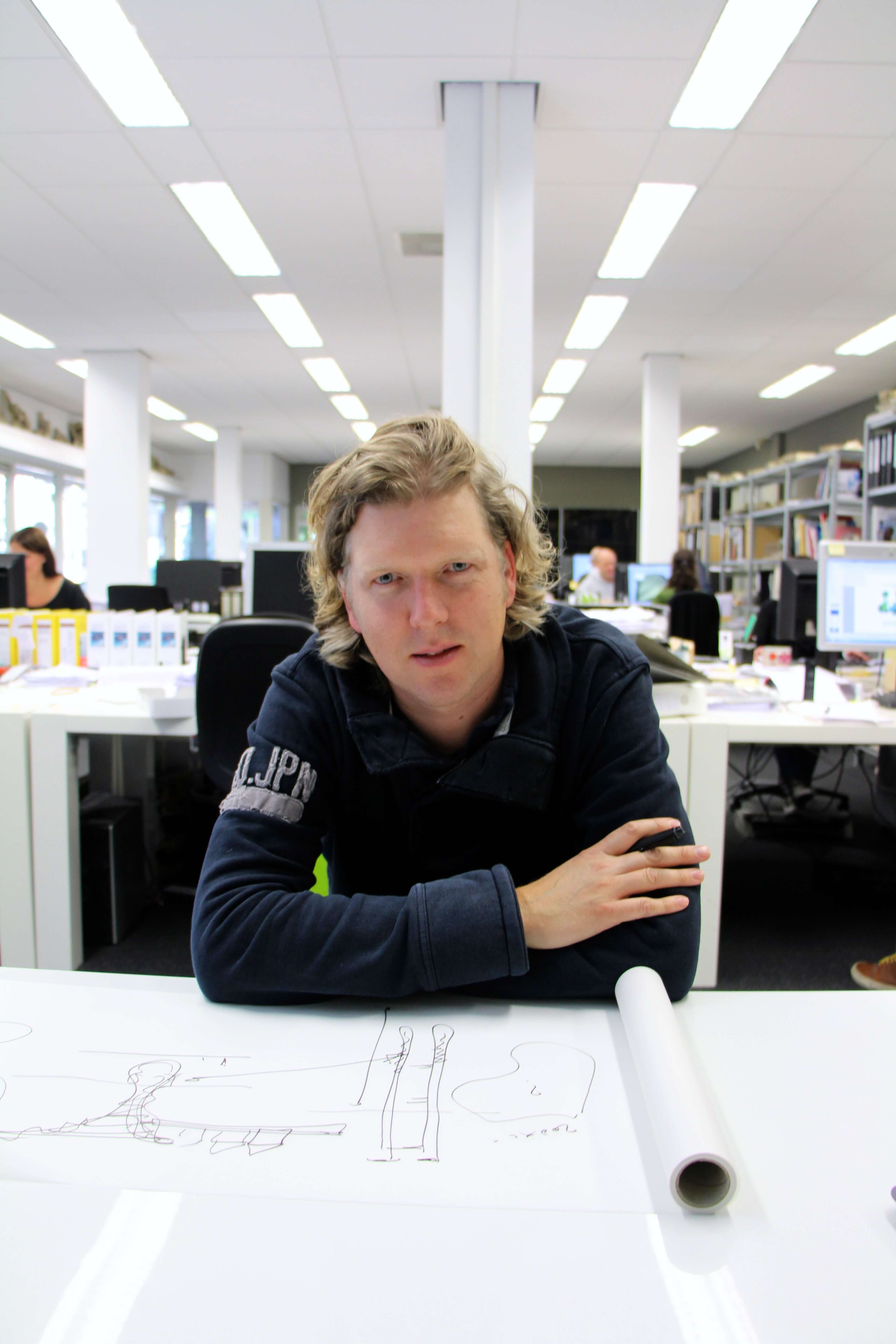
 TRACY METZ, AMSTERDAM FRAMER, AND KOEN OLTHUIS
TRACY METZ, AMSTERDAM FRAMER, AND KOEN OLTHUIS

